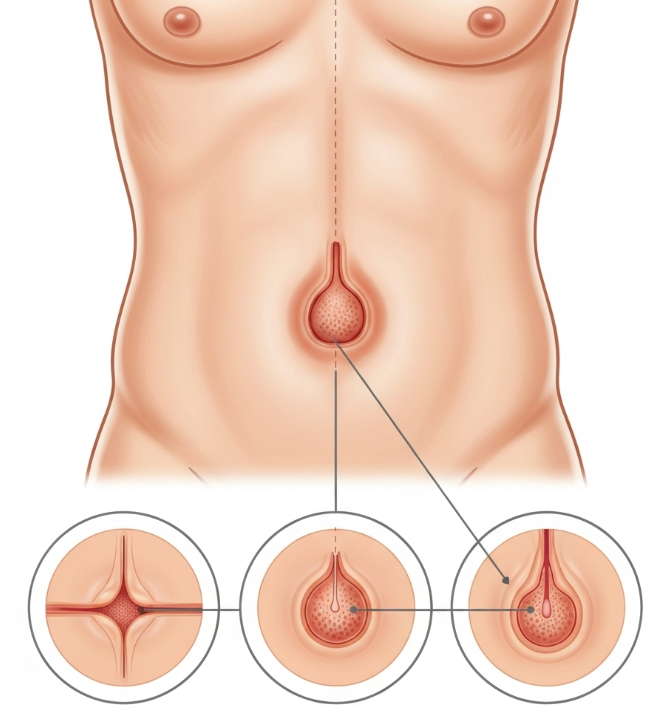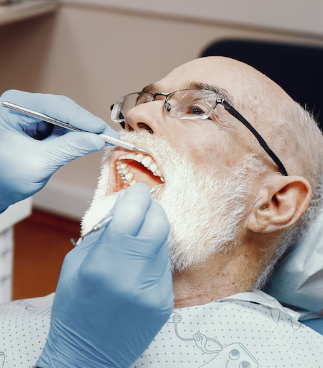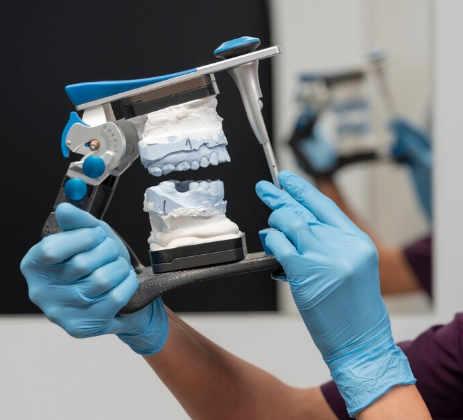Treatment Overview
Enlargement Umbilicoplasty is a cosmetic belly button reshaping surgery designed to enlarge a small, tight, or scarred navel into a more balanced, natural-looking belly button. Many people feel that a very small or closed belly button looks unnatural or aesthetically unappealing, especially when wearing swimwear, crop tops, or low-rise clothing. Enlargement umbilicoplasty corrects this by creating a wider, more open navel that suits the patient’s abdominal proportions.
In Korea, surgeons are highly skilled at navel enhancement procedures, often combining enlargement umbilicoplasty with tummy tuck, liposuction, or scar revision for more comprehensive abdominal improvement. Korean clinics are known for scar-minimizing techniques, precise suturing, and natural design, making the results both discreet and long-lasting.
Purpose & Benefits
- Belly Button Enlargement: Corrects small or tight navels for a more open, attractive appearance.
- Improved Aesthetics: Creates a natural, youthful belly button shape.
- Scar Revision: Corrects navels affected by past surgery, hernia repair, or piercing scars.
- Proportionate Results: Tailors the belly button size to suit the patient’s abdominal frame.
- Confidence Boost: Enhances self-image in clothing that reveals the midsection.
Ideal Candidates
- Men and women with naturally small or slit-like belly buttons.
- Individuals with belly buttons altered by scarring, hernia surgery, or piercings.
- Patients seeking a larger, more defined belly button for aesthetic balance.
- Adults in good health with realistic expectations.
- Non-smokers or those willing to quit before and after surgery.
Possible Risks & Complications
- Temporary swelling, bruising, or soreness.
- Mild discomfort at incision sites.
- Small risk of asymmetry or irregular belly button contour.
- Rare risks: infection, delayed healing, or visible scars.
Techniques Used
- Hidden Incisions: Made inside or around the navel for minimal visibility.
- Umbilical Enlargement: Excess tissue released and reshaped for a wider, open navel.
- Scar Revision: Removes old scar tissue if present.
- Fine Suturing: Ensures natural contour and proportion.
- Combination Options: Can be paired with tummy tuck, liposuction, or inverted navel correction for a complete transformation.
Recovery & Aftercare
- 1–3 days: Mild swelling, tightness, or redness around belly button.
- 3–5 days: Return to light daily activities and work.
- 1–2 weeks: Healing progresses; any external stitches removed (if non-dissolvable).
- 2–4 weeks: Resume light exercise; avoid abdominal strain.
Aftercare Guidelines:
- Keep area clean and dry to prevent infection.
- Avoid heavy lifting or abdominal strain during early healing.
- Follow scar-care program (silicone sheets, creams, or laser if recommended).
- Protect the belly button from direct sun exposure until healed.
- Attend follow-up visits to monitor results.
Results & Longevity
- Larger, more natural-looking belly button shape.
- Minimal scarring thanks to hidden incisions.
- Long-lasting results with stable body weight.
- Increased confidence in wearing midriff-baring clothing.
Treatment Process in Korea
1. Consultation & Planning
- Surgeon evaluates belly button size, skin condition, and patient goals.
- Customized enlargement plan created to match abdominal proportions.
2. Surgery Day
- Performed under local anesthesia with sedation (or general if combined with other procedures).
- Small hidden incisions made inside or around the navel.
- Navel reshaped and enlarged using tissue release and precise suturing.
- Procedure usually takes 30–60 minutes.
3. Post-Operative Monitoring
- Patients usually discharged the same day.
- Light dressing applied to protect the navel.
4. Follow-Up & Refinement
- Follow-ups at 1 week, 1 month, and 3 months.
- Scar management or refinement treatments offered if necessary.
Why Korea is a Top Destination
- Surgeons with specialized expertise in cosmetic belly button surgery.
- Use of advanced scar-minimizing closure techniques.
- Combination treatments available (umbilicoplasty + liposuction or tummy tuck).
- More affordable pricing compared to Western countries.
- Clinics in Seoul provide multilingual staff, discreet care, and aftercare programs for international patients.
Cost Range
The cost of Enlargement Umbilicoplasty in Korea varies based on complexity, clinic reputation, and whether combined with other procedures.
Estimated Pricing:
- Standalone Enlargement Umbilicoplasty: USD $1,500 – $3,000
- Enlargement + Scar Revision: USD $2,000 – $3,500
- Enlargement + Liposuction or Mini-Tummy Tuck: USD $3,500 – $6,000
- Premium Clinics (3D imaging + scar-care + VIP aftercare): USD $4,000 – $7,000
Additional Costs:
- Consultation & imaging: USD $50 – $150
- Medications & aftercare: USD $100 – $200
- Optional scar-care treatments: USD $200 – $500
Popular Clinics
- Banobagi Plastic Surgery (Seoul): Experts in advanced umbilicoplasty for natural belly button design.
- ID Hospital (Seoul): Known for combining belly button surgery with body contouring.
- JK Plastic Surgery Center (Seoul): JCI-accredited, premium abdominal and scar revision surgery.
- View Plastic Surgery Clinic (Seoul): Specialists in belly button aesthetics and scar minimization.
- JW Plastic Surgery (Seoul): Leaders in belly button reshaping with long-lasting, natural results.




